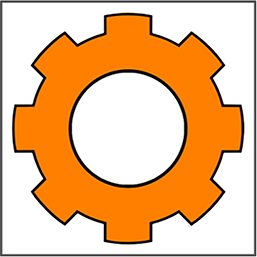Unbinding
The GearBox Gallery
June 11-July 17, 2021
Fridays & Saturdays 12 noon to 5pm

What questions do you ask yourself about painting?
When I started this body of work, I knew I wanted to work primarily from my imagination and instincts again, after two years of making work that was about intensely observing the forest. In starting this series, I asked myself “How does my observational and representational work feed my abstract work?” and “How can I create work from my imagination without repeating myself and falling back into comfortable decisions?”
As a piece develops, especially when I’m adding pieces of cut paper, I first notice where I would instinctively want to place a shape I had cut out, and then I ask myself “what if I rotate , or overlap or trim it? What if I consciously turn away from my initial instincts some of the time?”
What inspires you or where do you find your inspiration. I am always curious about where painters get their ideas.
I’ve been working in this method combining drawing, painting and collage for over 10 years now. It started as a demonstration art project I created for my high school students. I made a cut paper piece in front of my class and ended up falling in love with it, and I took it home to continue working on it. Adding cut paper graphic shapes to my work was an exciting contrast to my brushy, expressive, organic style of painting. Years of studying the world around me in up close detail gave me an internal library of shapes I wanted to deconstruct, and utilize in my abstract paintings. In the beginning, I told myself the work was about a dialogue between the organic and the mechanical or human-made. Over the years, I’ve fed my internal world with fantasy and science fiction writers like Stanislaw Lem, Octavia Butler, NK Jemisin and Margaret Atwood; so a lot of my internal imagery grapples with themes of how we might interface with an unfamiliar life. In my work I’m approaching dueling forces that are interacting in awkward ways, or may even be harming each other.
My imagination still loves the sci-fi inspired content, but something has shifted in my inspiration over the past two years–I’ve started to wonder how my work relates to the real world – and my responsibilities living as a white man in the United States in the midst of our racial justice reckoning. Through the mediums of writing and teaching, I have felt called to do white consciousness and racial justice work, but I felt a real disconnect with my artwork.
I stumbled upon a connection between my abstract mixed media paintings and my real world “shadow work” when I used my paintings as a visual teaching tool in a presentation I gave to a group of teachers on student-centered learning. In the safe space of talking with other teachers, I stumbled upon this way of using my artwork to talk about themes of fostering choice and intellectual curiosity in adolescents. I started to wonder if my abstract work–and my internal process in creating the work was actually connected to my personal white-consciousness work. I really believe that it’s impossible to create anything in a vacuum, siloed off from other parts of your life. And if all the work I’ve been doing through writing and conversation around racial justice and dismantling white supremacy was somehow spilling into my artwork, then how? I noticed a connection between the habits in my studio practice to the habits and behaviors I exhibit in society as a white man. I began to bring it to the surface so I could examine it. I began using my abstract paintings to talk about fears and emotional issues, working with dialogue of shapes both fragile and mechanical, until they became evocative.

How do you start a painting? Can you take me through your process?
Oftentimes this body of work starts with painting color fields and deciding on a few key colors that create an interesting dialogue with each other. When I’m incorporating collaged papers, I spend a few weeks painting color fields, textures and patterns onto recycled paper. This helps me create a stock of collage material to pull from as I go back and forth between cutting, gluing, painting over, adding colored pencil, sanding and varnishing. Another technique that has become important to my work is sgraffito (or scratching into a paint surface). The hatching marks I create in the wet color fields is another way for me to add a drawing element into the work, and experiment with revealing underlayers.
My paintings on panel move around a lot in the studio, sometimes being worked on vertically with a brush, and sometimes being puddled upon with acrylic inks and slurries of acrylic mediums. I’ve also started using sanding (both manual and electric sander) as a key part of the process.
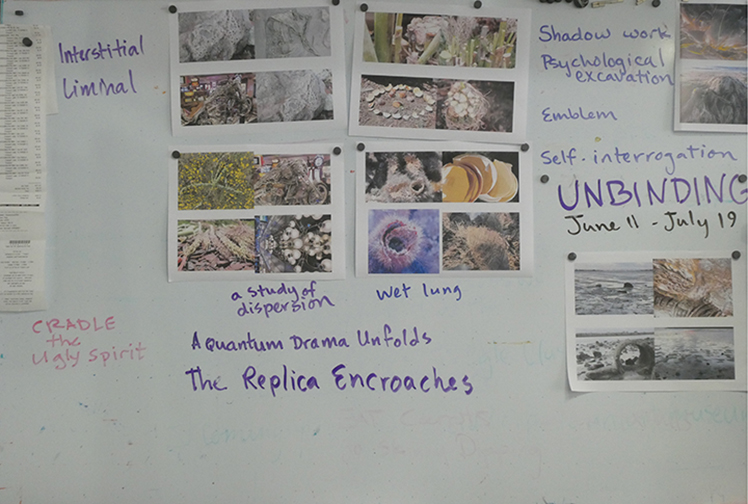
How do you judge when a painting is complete?
Even when my work is totally abstract, a painting feels complete when it starts to tell a compelling story. The characters in the story may be unnameable shapes or interesting color relationships, but they must interact–and it’s that interaction that helps me develop a title for the piece. I’m really interested in dominance and subordination in my current work. I imagine everything within the painting existing in varying degrees of dominance or prominence. It’s about creating a design that embraces two-dimensionality, but there’s an atmospheric quality that creeps its way in and creates a sense of depth. Another key marker for me is the piece must have a compelling visual pathway when viewed from a distance, but spark wonder and invite examination when viewed up close.
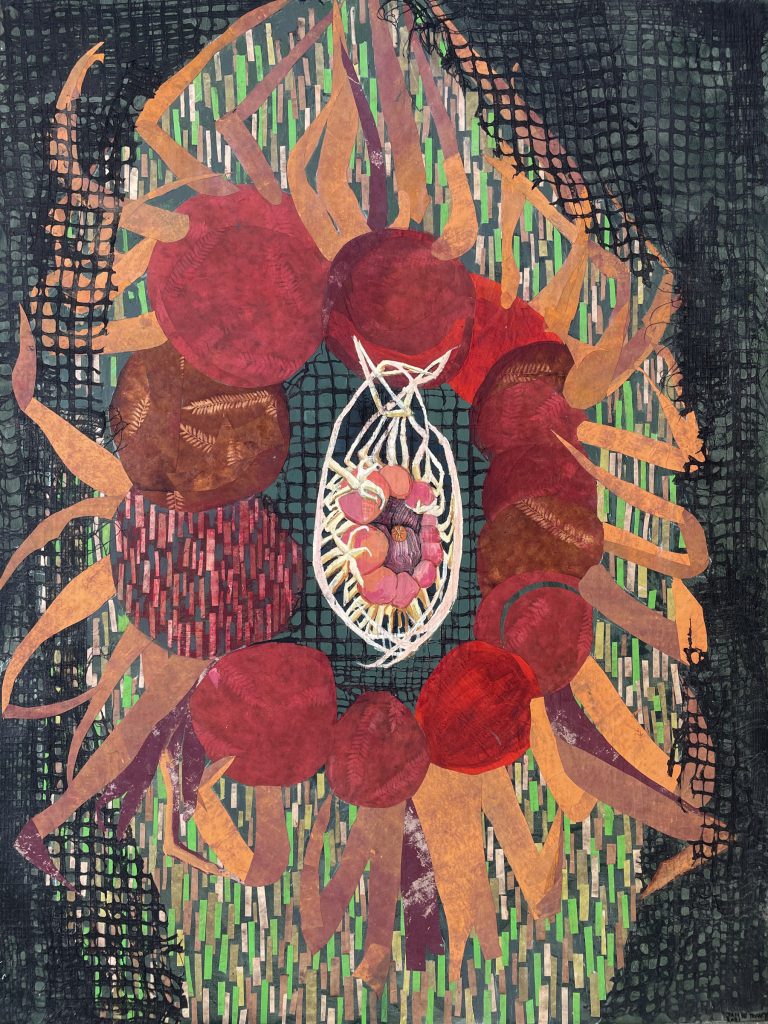
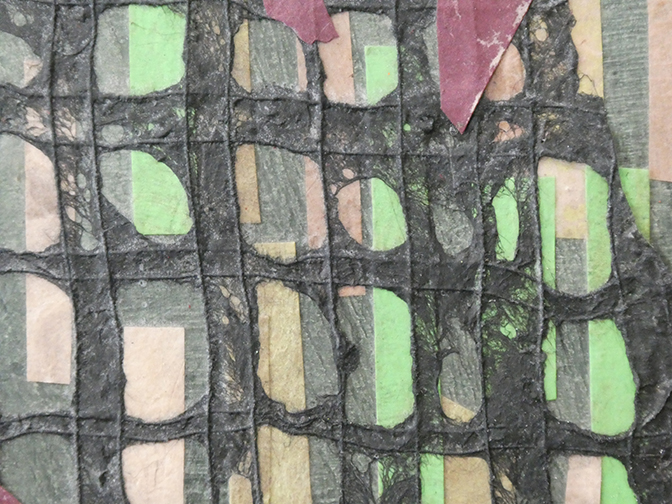
What artists have influenced you and how or what is it about their work that has moved you?
Morris Graves comes to mind when I think about this body of work. I love the emotional content of his work, and the spiritual connection to nature. I’ve also been following the careers of several younger figurative painters. I really love the work of Danica Lundy. Her paintings are so bonkers and exciting to me. I’m fascinated by how much she can cram in a composition, and the unusual points of view she presents the viewer with. Lastly, a long time influence has been Wangechi Mutu. I love her exploration of materials and the darkness and beauty duality.
What do you do to feed your work? Can you talk a bit about your painting practice?
Hikes in the East Bay Hills, swims in the SF Bay and I spend a lot of time listening to audiobooks while I paint. Another thing that feeds my painting practice is encountering an interesting free material, and then figuring out how to use it. Much of the smaller works in this series are done with mat board scraps that were given to me by a fellow artist. The cheesecloth in the larger pieces in the series I found in the back a long neglected storage closet at the high school where I teach.
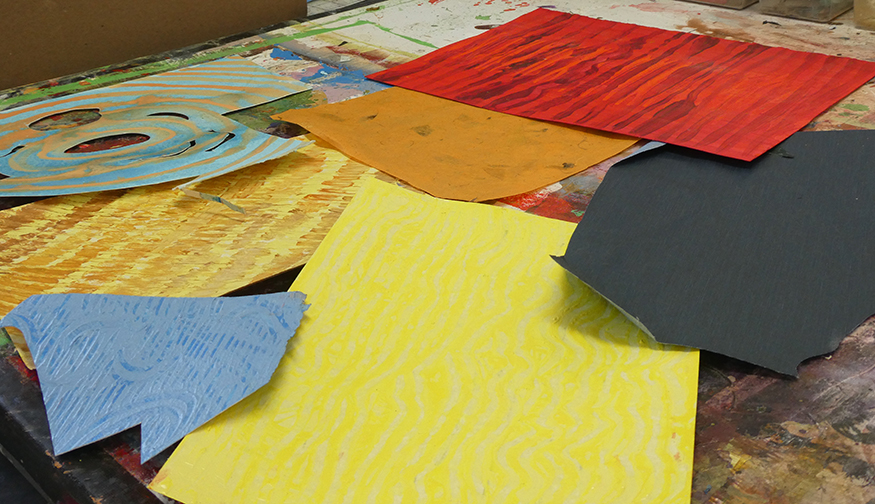
The work “around “ painting that feeds into you beyond the finished paintings.
I teach visual art at Skyline High School, and I’ve been teaching since 2004. It feeds my studio practice because it forces me to think out loud and explain the creative process constantly. I love writing curriculum and devising new art projects, and oftentimes the projects become so interesting to me that I take on their themes in my own work.
Have you had major turning points in your art/life?
Moving to Oakland, CA from Michigan was a huge turning point. I felt so triumphant to make it to California, and come here for my MFA program at California College of the Arts. It was a huge adjustment, and for a long time I didn’t feel worthy of being here. It was a slow process of learning to belong, but now it’s so fully my home.
How did you come to be an artist?
I became an artist in high school, in a Commercial Design course I was taking. Before then, I was constantly creating, always having a sketchbook with me. It wasn’t until I understood that I could major in art in college and have a creative career did I begin to see that for myself. Since the age of 16, it’s been my primary focus and my reason for being on Earth.
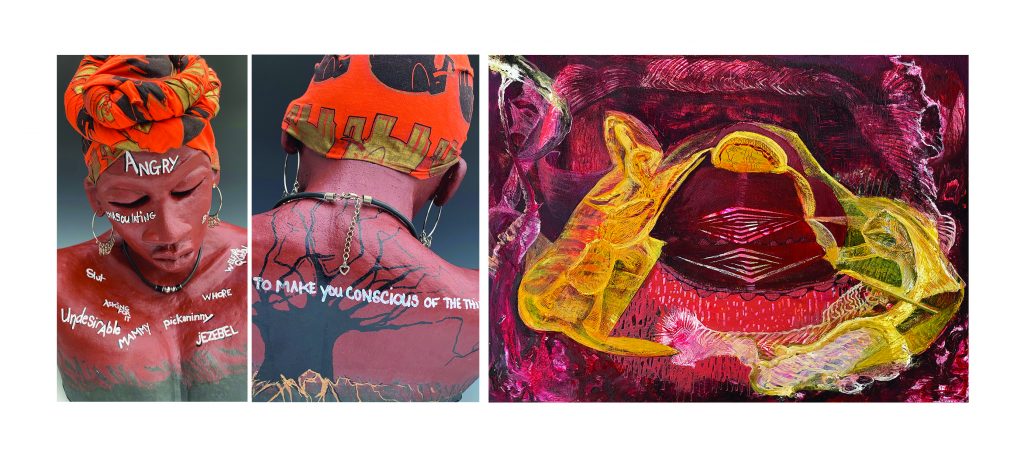
Stephanie Thames, Phenomenal Woman (images on the left)Jamie Treacy, Cradle the Ugly Spirit (on the right)
